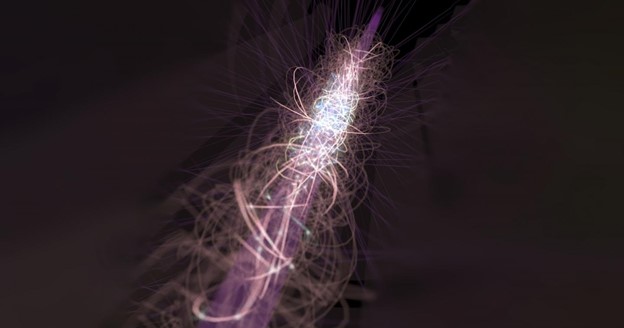CERN laser cools antimatter for the first time
Swansea University physicists, leading members of the ALPHA collaboration at CERN, just published a paper in Nature demonstrating the laser cooling of antihydrogen atoms for the first time. The result is colder antimatter than was previously possible, enabling new experiments on antimatter.
The paper reports that the temperature of antihydrogen atoms trapped inside a magnetic bottle is reduced when atoms scatter light from an ultraviolet laser beam, slowing the atoms down and reducing the space they occupy in the bottle. The team also discovered a reduction in the range of wavelengths that cold atoms can absorb or emit light on. The spectral line is narrowed because of the reduced motion, which will allow a more precise determination
Antimatter is a necessity for successful quantum mechanical models of particle physics. When matter and antimatter come together annihilation occurs so that the original particles disappear. This can be observed in the laboratory and is even used in medical diagnostic techniques such as positron emission tomography (PET) scans. However, an equal amount of antimatter and matter formed in the Big Bang, but this is not preserved today as antimatter seems to be virtually absent from the visible universe.
Swansea University’s Professor Niels Madsen claims that this is a remarkable feat that they can now also laser-cool antihydrogen and make a very precise spectroscopic measurement, all in less than a single day. If performed two years ago, the spectroscopy alone would take ten weeks. The team’s goal is to discover if the properties of their antihydrogen match those of ordinary hydrogen as expected by symmetry. A small difference could help explain the some of the deep questions surrounding antimatter.
Original Source: Eureka Alert

